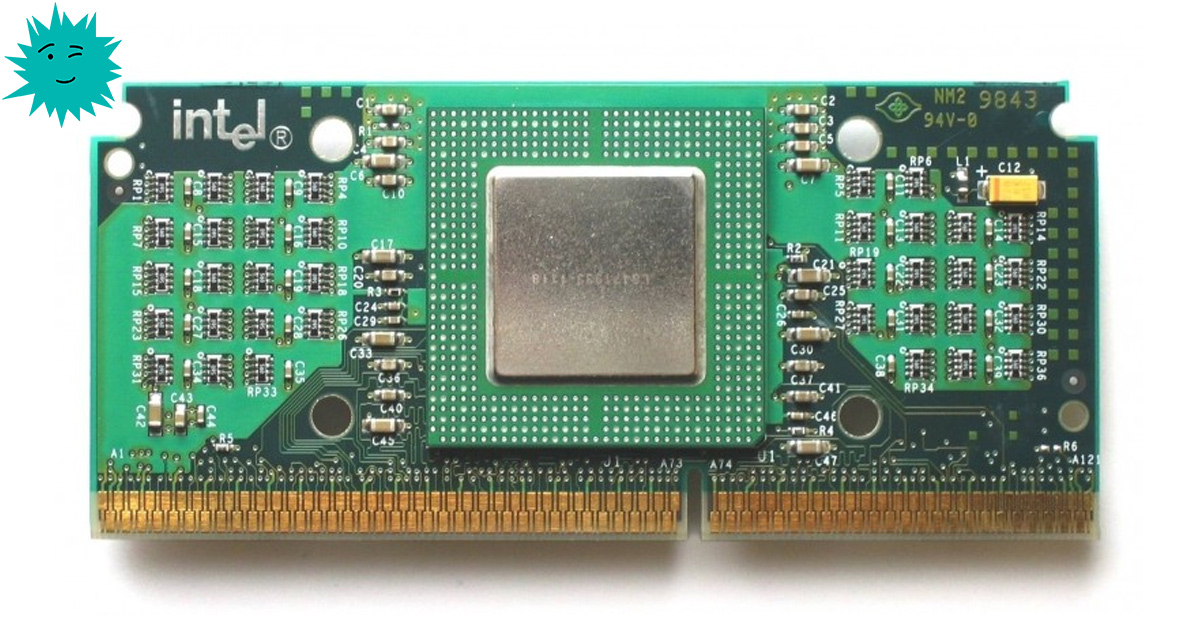
Fans have strived to make the most of silicon since the advent of microprocessors. In the early days, overclocking was performed by soldering and replacing crystal clock generators, but this practice quickly evolved into changing system bus speeds using DIP switches and motherboard jumpers.
The internal clock frequency multipliers appeared, but they were soon blocked, because unscrupulous sellers removed the official nominal frequencies and indicated their own, higher parameters. For most users, the system buses and dividers became the most important overclocking options, and the most die-hard fans physically changed the electrical specifications by hardware modding the equipment.
Today we are back to the internal clock multipliers. System bus speeds are increasingly controlled to maintain system stability, again limiting the room for the competitive nature of overclocking.
Throughout the history of personal computers, there have been several processors that have become legendary for their overclocking ability. In this article, we will talk about them.
Intel Pentium MMX 166

Release date: January 8, 1997
Standard clock speed: 166 MHz
Overclocking: 207 - 266 MHz (~ 54%) The
Pentium MMX emerged at a time when retailer dark deals were flourishing, to which x86 processor manufacturers responded by blocking the upper multiplier limits. Therefore, many MMXs used a higher bus frequency for overclocking. Unlocked MMX processors provided more options for overclockers, and the most important among them was the MXX 233, although its price ($ 594) was too high for many.
A better deal, at $ 407, was the MMX 166, and when installed on a motherboard with a 430TX chipset that had a standard bus speed of 75 MHz, it was possible to reach 225 or 266 MHz (multiplier 3 or 3.5). To surpass the 200 MHz threshold, MMX 166 processors with a locked multiplier had to rearrange the jumper to switch to 83 MHz (2.5 * 83 = 207 MHz) (if possible), however, stability and heating at this bus speed were much higher problematic, as well as finding a high-quality EDO / SDRAM RAM, necessary to work with this frequency.
Intel 486DX2-40

Release Date: March 1992
Standard Clock
Speed : 40 MHz and 50 MHz Overclocking: 66 MHz (~ 65%)
The P24 DX2 486 processors introduced a CPU clock multiplier that doubles the system bus speed, and the system bus speed itself could be adjusted using jumpers or DIP switches on the motherboard. Initially, the line included models for 20, 25 and 33 MHz (later it was supplemented with models for 40 and 50 MHz). Users got the opportunity to overclock, which does not require soldering and replacing a crystal oscillator.
In addition, DX2-66 performance (which cost $ 799) could be achieved by purchasing the 486DX2-40 for $ 400 and raising its standard bus speed from 20 MHz to 33 MHz.
Due to stability and VLB slot issues, at bus speeds above 33 MHz, overclocking capabilities decreased with increasing base clock; to the point that many Intel DX2-66s did not overclock at all, and some were often limited to only 80 megahertz (2 x 40 MHz).
Intel Celeron 300A

Release Date: August 24, 1998
Standard Clock
Speed : 300 MHz Overclocking: 375 - 504 MHz (~ 55%)
Overclocking is believed to have gained immense popularity in the late 90's due to the ease of overclocking the legendary Celeron 300A. To overclock it by 50% to 450 MHz, it was enough to simply change the bus speed from the nominal 66 MHz to 100 MHz. Although the maximum frequency of some motherboards was 83.3 MHz, limiting overclocking to 375 MHz, motherboards with support for the system bus (FSB) at 103 MHz allowed 464 MHz.
The highest quality chips could run at 112 MHz FSB when the voltage was raised, providing a processor frequency of 504 MHz. Notably, the 300A could typically reach 450MHz without additional voltage requirements, at 2.0V nominal. The on-chip L2 cache also contributed to the chip's performance, and at $ 149 it was especially handy for system builders.
AMD Athlon 700 (Thunderbird) / Duron 600 (Spitfire)
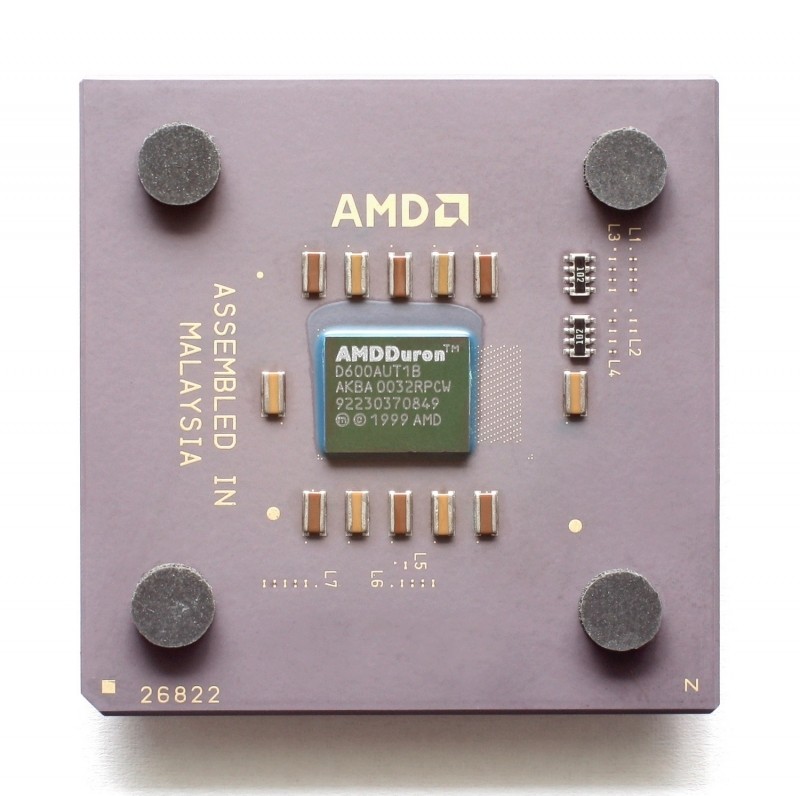
Release Date: July 5, 2000 (Athlon 700) / June 19, 2000 (Duron 600)
Standard Clock
Speed: 700 MHz / 600 MHz Overclocking: 770 - 900 MHz (~ 12%) / 800 - 1000 MHz (~ 59%)
" The AMD Thunderbird Pencil Mod has become an overclocker's dream come true. AMD has locked the voltage and multipliers of the K7 line in an attempt to prevent fraudulent re-labeling of processors. Overclockers quickly figured out that the key to unlocking performance was the board jumpers built into the case.
Initially, the combination of jumpers in blocks L3, L4 and L6 allowed the L1 connections to be closed to unlock the multiplier. It was also possible to close the connections of the L7 block to change the core voltage, and for this process, a soft graphite pencil or a pen applying conductive paths was sufficient.
Since the AMD EV6 system bus was sensitive to overclocking, overclocking the multiplier provided ample opportunities only in the Duron line due to its lower core voltage (1.5 V instead of 1.7 / 1.75 V), which allowed for a larger relative increase to the maximum allowable 1 , 85 V.
At a cost of only $ 112, the Duron 600 in a few minutes could easily be brought closer in performance to a processor many times higher in price.
Intel Core 2 Quad Q6600 G0 Revision

Released: January 8, 2007 (B0 version) / July 22, 2007 (G0 version)
Standard clock speed: 2.4 GHz
Overclocking: 3.4 - 3.6 GHz (~ 46%)
Core 2 Quad Q6600 reaches an enviable record lifespan and performance, becoming the de facto choice for overclockers looking to purchase a budget quad-core CPU. Since January 2007, its original price ($ 851) has fallen rapidly, reaching $ 530 in May; further price restructuring in July coincided with the release of the G0 version. At $ 266, the 2.4GHz quad-core chip is up to par with the new 3GHz dual-core E6850, which can easily be outperformed by the earlier B3's Q6600.
The new G0 version provided slightly less power consumption, which resulted in improved overclocking capabilities. Thanks to this, many users were able to achieve stable 3.4 - 3.6 GHz almost effortlessly. The advent of the affordable Intel P35 platform and the further decrease in the price of the Q6600 throughout 2008 from $ 224 (in April) to $ 183 (in October) provided the possibility of reliable overclocking within 50% (9x multiplier and 400 MHz FSB gave 3.6 GHz ) at quite reasonable costs. This model remained very competitive long after many of its modern processors lost their popularity.
Intel Pentium III 500E
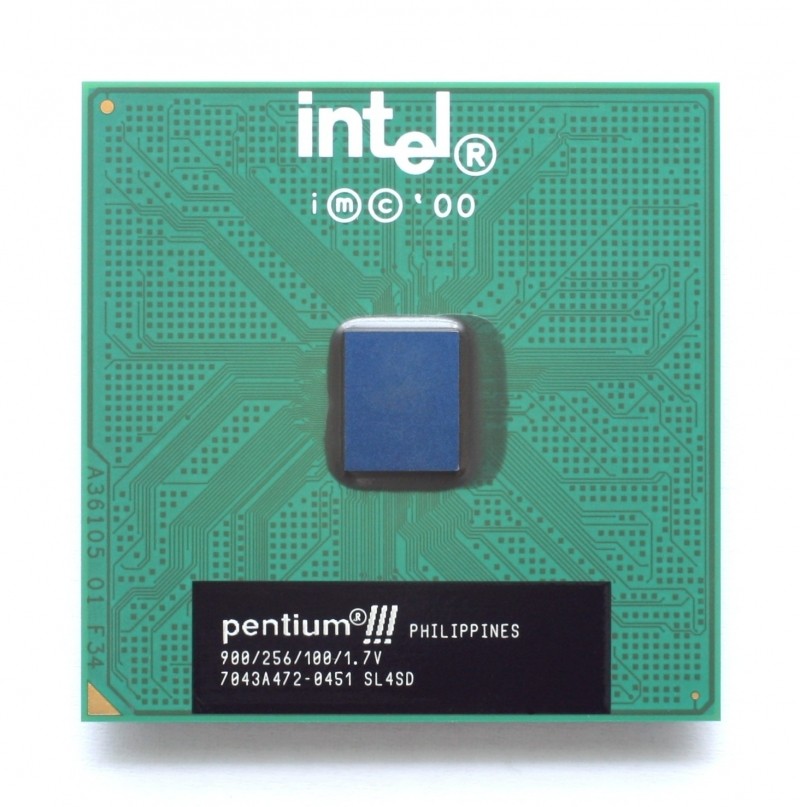
Release date: October 25, 1999
Standard clock frequency: 500 MHz
Overclocking: 667 - 775 MHz (~ 50%)
Coppermine Pentium III 500E and 550E overclock reasons were Intel binning processors with a margin, low system bus frequency (100 MHz) and an integrated L2 cache. The budget pricing ($ 239) and the ability to use older Slot 1 motherboards with Socket 370 to Slot 1 adapters provided excellent performance at a modest cost.
The 500E could easily operate at 667 MHz after selecting the system bus frequency of 133 MHz in the BIOS or after insulating the A14 contact of the Slocket adapter with tape or varnish. More expensive motherboards could reach 750 MHz (FSB 150 MHz) and higher, getting the same performance as the $ 850 Pentium III 800.
However, there were some peculiarities during overclocking, for example, motherboards had to support AGP and PCI clock dividers (respectively, 1: 2 and 1: 4) to ensure the stability of the installed components and fast PC133 RAM.
AMD Athlon XP-M 2500+ (Barton Mainstream 45W TDP)
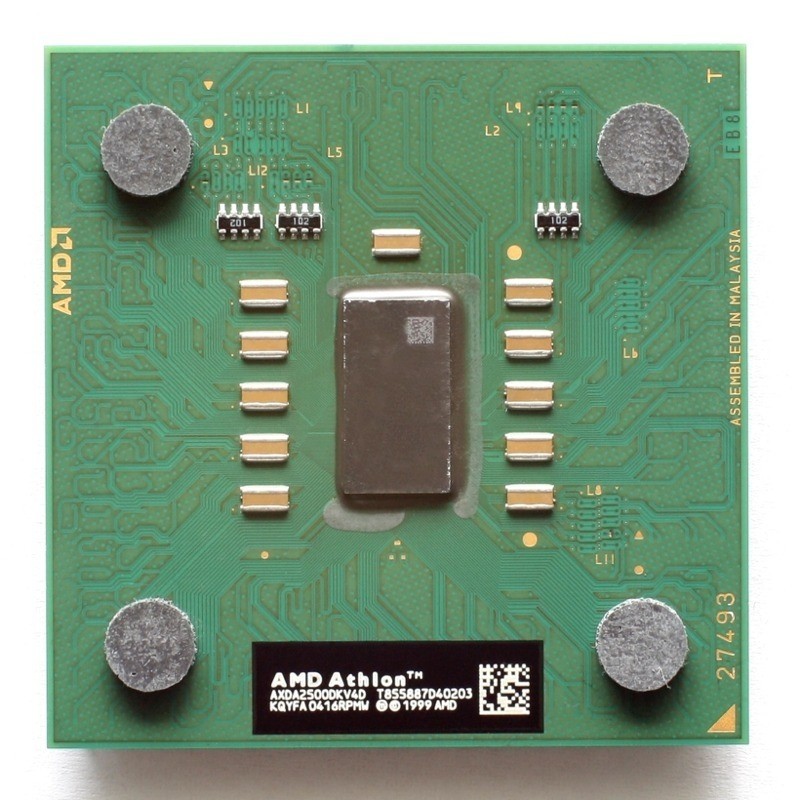
Release Date: March 12, 2003
Standard Clock
Speed : 1.87 GHz Overclocking: 2.4 - 2.7 GHz (~ 32%)
In early 2004, the overclocker community took notice of the fact that Barton mobile processors have an unlocked multiplier clock frequency; in addition, they are designed to operate at reduced voltage (1.45 V versus desktop 1.65 V). These factors often provided phenomenal overclocking capabilities that were lacking in desktop models.
When the overclocking potential of this chip became known to the general public, its price jumped from its original $ 75 by 30% in a matter of weeks. On a reliable nForce2 motherboard with good cooling, when the voltage was increased to 1.8 V and higher, it was often possible to achieve overclocking up to 30-40%. Despite the fact that such an impressive growth did not allow to eliminate the performance difference with the new Athlon 64, the Athlon XP-M 2500+ still did not cost from $ 200 to $ 400.
AMD Opteron 144/146 (K8 Venus)
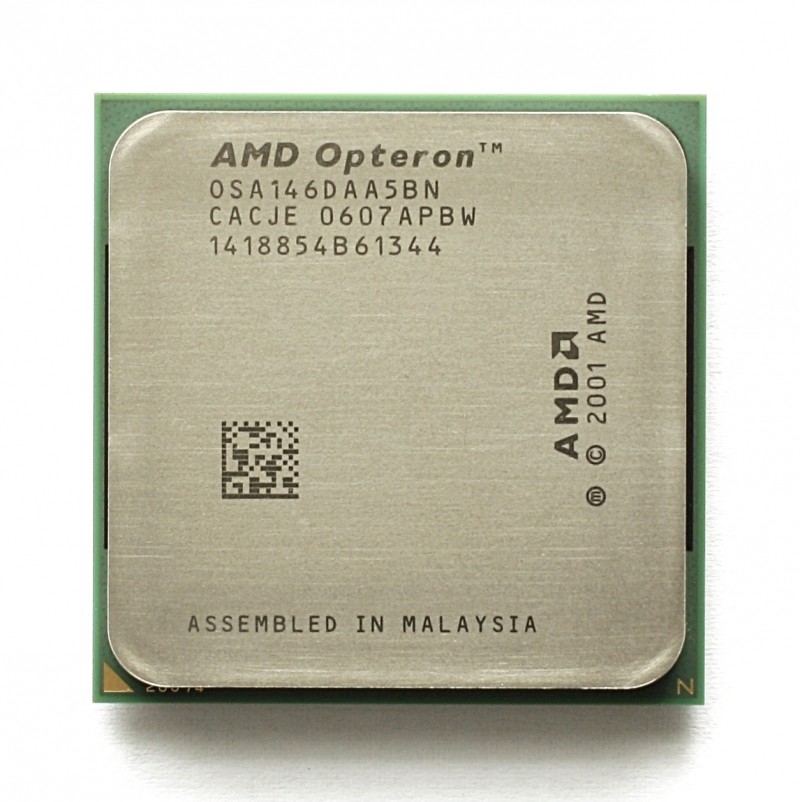
Release Date: August 2, 2005
Standard Clock
Speed : 1.8 GHz / 2.0 GHz Overclocking: 2.5 - 3.0 GHz (~ 63%)
Equipped with the same silicon as San Diego-based processors Athlon 64, Socket 939 Opteron models priced at $ 125 and $ 183 had a significant price advantage over the similarly spec Athlon 64 3700+ ($ 329), and performed even better against the $ 1000 FX-57.
As with all overclocked processors, the Opteron's overclocking ability was directly related to the power of the chosen motherboard. Binning of Opteron server chips "with a headroom" combined with a reliable overclocking board, for example, on the nForce4 chipset and HyperTransport frequencies reaching (and exceeding) 300MT / s, allowed to achieve overclocking rarely provided by enterprise-class processors.
While all Opteron models had approximately the same overclocking ceiling, the cheapest $ 144 chips were quickly sold out in many countries.
Intel Core i7 2600K / Core i5 2500K
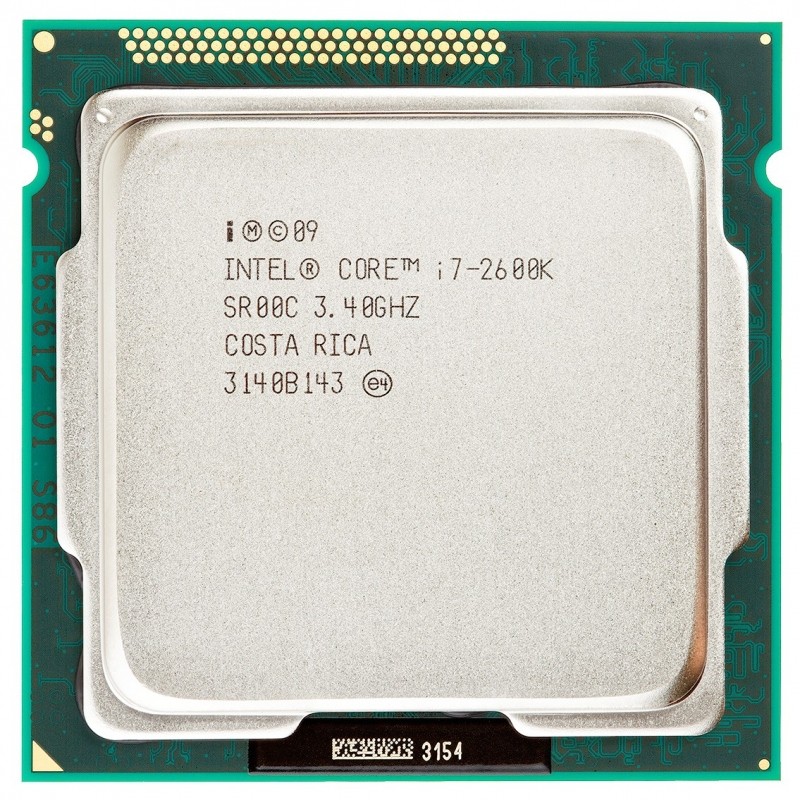
Release Date: January 9, 2011
Standard Clock Speed: 3.4 GHz (Turbo 3.8 GHz) / 3.3 GHz (Turbo 3.7 GHz)
Overclocking: 4.6 - 5.0 GHz (~ 49%)
When Intel announced a top clock multiplier limitation and almost no FSB overclocking capabilities in the new Sandy Bridge compatible Cougar Point chipsets, which most users saw as the end of overclocking for Intel platforms. However, in fact, the 2500K and 2600K models turned out to be ideal for overclocking, allowing you to achieve stable overclocking by 30-50% with a minimum investment of time and improved cooling.
The popularity of the 2600K was such that the overclocking results of this processor in 2011 accounted for 28% of all published on the HWBot website, and in 2012 outnumbered its descendant, 3770K. With its low price (just $ 216) plus good air or water cooling capabilities, the Intel 2500K has become the de facto standard for evaluating all consumer-grade CPUs.
Intel Core i7 920
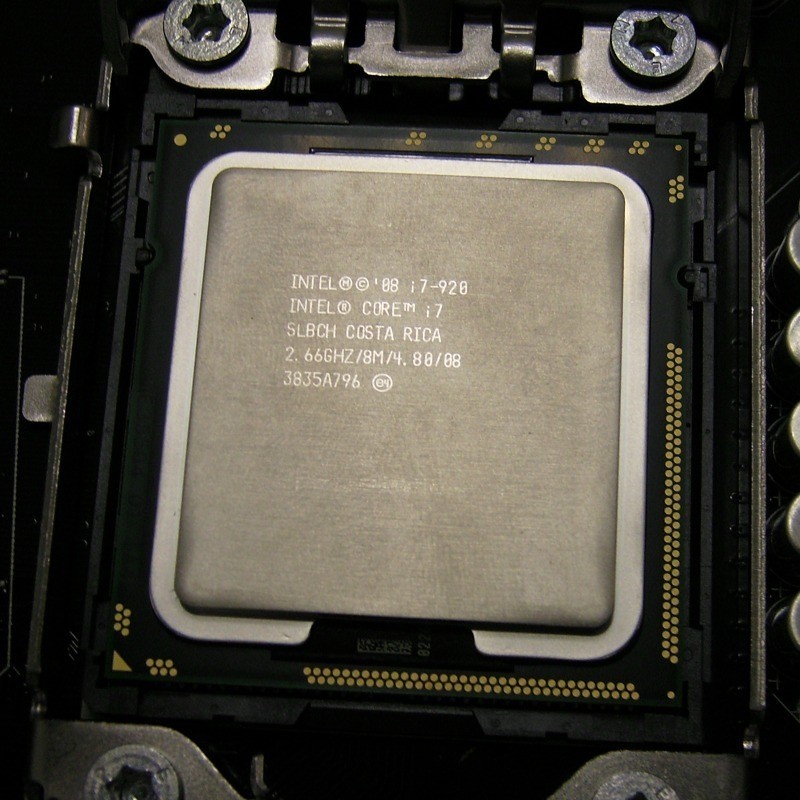
Release Date: November 17, 2008
Standard Clock
Speed : 2.67 GHz (Turbo 2.93 GHz) Overclocking: 3.5 GHz to 4.0 GHz in C0, 3.8 to 4.2 GHz in D0 (~ 58 %) The
new Nehalem architecture and X58 platform seemed attractive enough to attract many users of long-lived Core 2 LGA 775 systems. Although the flagship i7 965 EE at $ 1,000 was a third cheaper than the Core 2 QX9770, it was still less relevant than the i7 920.
The first Bloomfield C0 processors required high voltages at frequencies above 3.6 GHz, and the next version D0 was often able to maintain a nominal voltage of 1.26 V up to 4 GHz and reach an absolute overclocking ceiling of almost 4.5 GHz if the user tried to increase voltage up to 1.5 V. The
popularity of the 920 was (and still is) such that reports of its overclocking account for a third of the total results of LGA 1366 processors.
Intel Pentium 4 1.6A / Celeron 2.0 (Northwood)
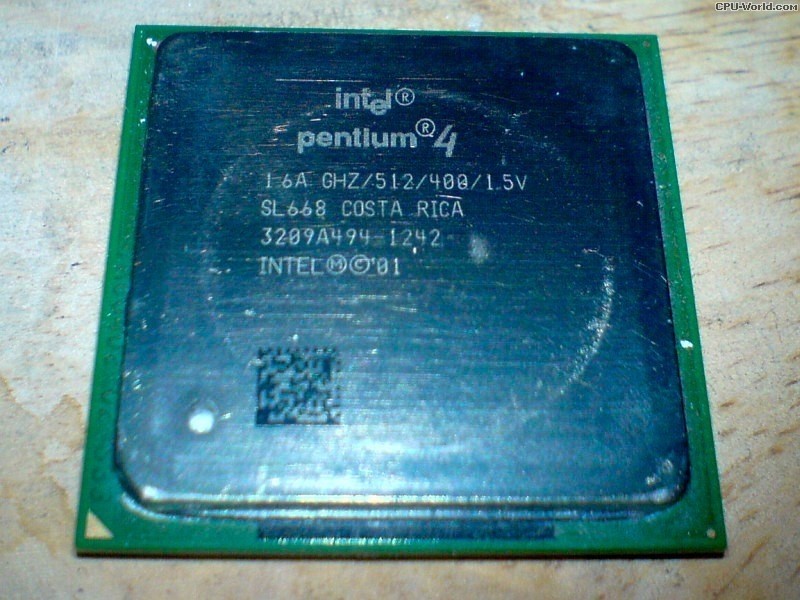
Release Date: January 7, 2002 (Pentium 4) / September 18, 2002 (Celeron 2.0)
Standard Clock
Speed: 1.6 GHz / 2.0 GHz Overclocking: 2.4 GHz - 2.8 GHz (~ 48%) / 2 , 66 - 3 GHz (~ 46%)
The appearance of the Northwood core was a long-awaited event after the disappointing Williamette, the high voltage and heat dissipation of which prevented massive overclocking. While the overclocked P4 was of little value over the XP, the $ 125 1.6A model turned the performance shortfall into a benefit with a low base FSB clock (100MHz) that could easily be bumped up to 150MHz for speed 2. 4 GHz.
Celeron overclocking was still higher thanks to the 20x multiplier, although performance was seriously limited by the modest L2 cache of only 128 KB. For those looking for enhanced overclocking, it was necessary to raise the voltage above 1.6 V either through the BIOS, or by wired mode (by connecting the CPU pins to increase the Vcore limit). The latter method was the main cause of a phenomenon called SNDS (Sudden Northwood Death Syndrome), better known as electrotransportation.
This factor, and the 1.6A hurting sales of high-end Intel models, forced the company to stop selling 1.6A just six months after its January 2002 release.
Intel Xeon LV 1.6 D1 revision (Prestonia)

Release date: September 2003
Standard clock speed: 1.6 GHz
Overclocking: 2.6 - 3.2 GHz (~ 63%) Overclocking is
most often associated with gaming systems, but dual-processor overclocking has been very popular for more than a decade. Long before the QX9775 and Intel Skulltrail board became synonymous with performance, many fans were on the hunt for the budget Xeon LV 1.6.
In fact, the Prestonia core was a Pentium 4 Northwood processor, which added SMP (symmetric multiprocessing) and HyperThreading as standard features. Although the $ 200 1.6GHz Xeon consumed the promising 1.274V, overclockers usually couldn't take advantage of the overvoltage option, as most motherboards had it blocking. However, a simple increase in the system bus frequency could get 2.6 GHz.
If the user was more inclined to gamble, he could use three hardware modes and get 100% overclocking (or even more!): The U-Wire mode, in which two (1.5 V) or three (1.6 V) were connected a set of socket contacts, a BSEL mod, which isolates or opens the CPU contacts, while increasing the FSB limit to 200 MHz, or a vDIMM mod, which increases the RAM voltage.
Those looking to push the limits of technology were rewarded with 3.2GHz dual-processor performance for roughly $ 700 (total cost of CPUs, coolers, motherboard, and RAM).
AMD Athlon XP 1700+ (Thoroughbred-B)
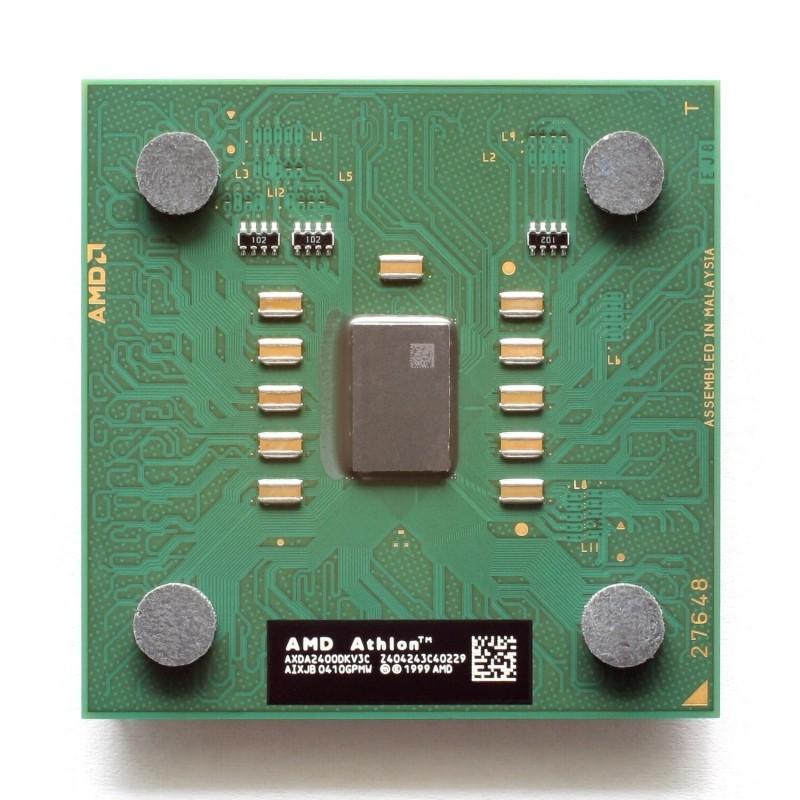
Release date: June 10, 2002
Standard clock speed: 1.46 GHz
Overclocking: 2.2 - 2.5 GHz (~ 44%)
The first Thoroughbred-A was almost the previous Palomino with a reduced die size and was quite disappointing as a finished product ... Released in June 2002, AMD Thoroughbred-B was more adaptable to the 130nm process, which resulted in higher core frequencies as well as increased efficiency, as version B showed remarkable overclocking capabilities with little or no voltage boost.
Combined with a powerful nForce2 motherboard, the $ 60 XP 1700+ processor was capable of nearly 2GHz core speeds at standard voltage. With an nF2 board capable of pushing the FSB over 200 MHz, it was possible to achieve a stable 40% overclocking at a moderate 1.7V, which outperformed the $ 397 AMD Athlon XP 2800+ flagship and posed a threat to the Intel Pentium 4.
Intel Pentium D 820 / D 805

Release Date: May 26, 2005 (D 820) / December 2005 (D 805)
Standard Clock
Speed: 2.8 GHz / 2.66 GHz Overclocking: 3.5 - 4.2 GHz (~ 26%)
Pentium D 820 turned out quite an outstanding anomaly - two single cores in a multi-chip package at a much lower price than the cheapest dual-core AMD Athlon 64 X2 ($ 241), even $ 30 cheaper than the single-core Athlon 64 3500+. The Pentium D 820 offered moderate performance, in no way rivaling the dual Athlons, but had decent overclocking potential thanks to reasonable voltages and good air or water cooling.
The arrival of the Intel D 805 ($ 129) further drew the attention of budget overclockers to the hot Netburst processor. The decrease in the nominal system bus frequency from 200 to 133 MHz was compensated by the 20x multiplier of the D 805, which made overclocking an interesting process. For those on a tight budget, the D 805, combined with a 945P board and appropriate RAM, provided performance that is available on a $ 500 processor assembly.
Intel Pentium Dual Core E2140 / E2160
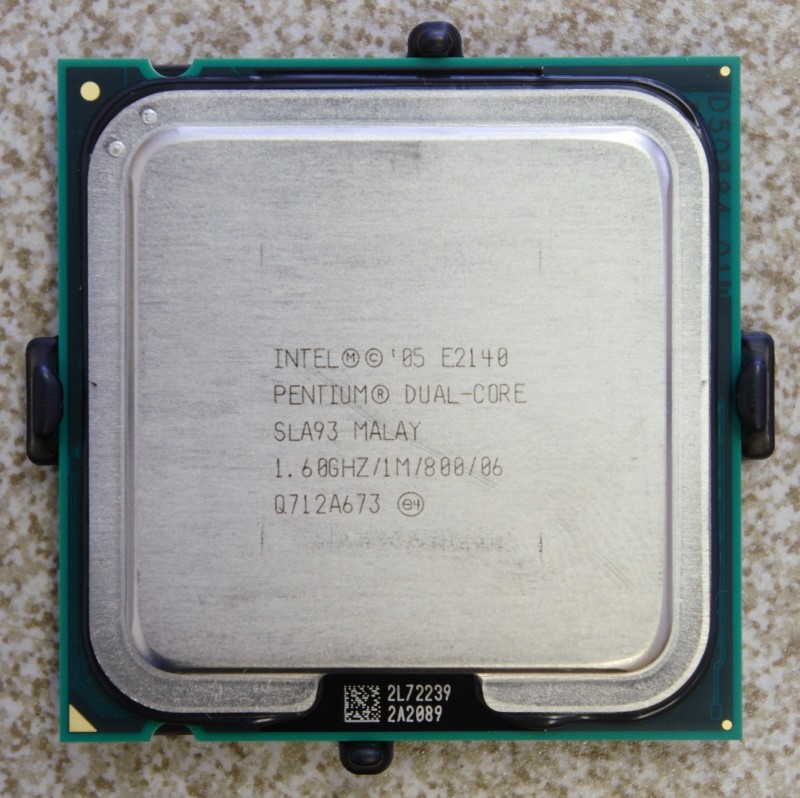
Release Date: June 3, 2007
Standard Clock Speed : 1.6 GHz (E2140) / 1.8 GHz (E2160) Boost
: 2.7 - 3.2 GHz (~ 89%) / 2.9 - 3.5 GHz (~ 92%)
Intel's E2000 series simultaneously signaled the demise of the last Pentium D surviving NetBurst and AMD's dominance in the budget market. Intel halved the L2 cache of the E4000 series, and also weakened the system bus performance by 200 MHz (800 FSB). However, Intel has not gotten rid of the Conroe's overclocking capabilities.
With standard voltages and a normal cooler, a 50% boost could be achieved simply by raising the bus speed to 300 MHz, either on an inexpensive motherboard with Intel P965 / P35, or on a motherboard with an Nvidia 650i SLI chipset, which, due to not relying on dividers memory frequency, provided more customization options.
A hand-bought air cooler, voltage regulation and a bit of luck in the silicon lottery were enough to overclock the processors by almost 100%, providing performance similar to the E6700 at a fraction of the price.
AMD Phenom II X2 550 Black Edition (Callisto) / X4 955 Black Edition (Deneb)
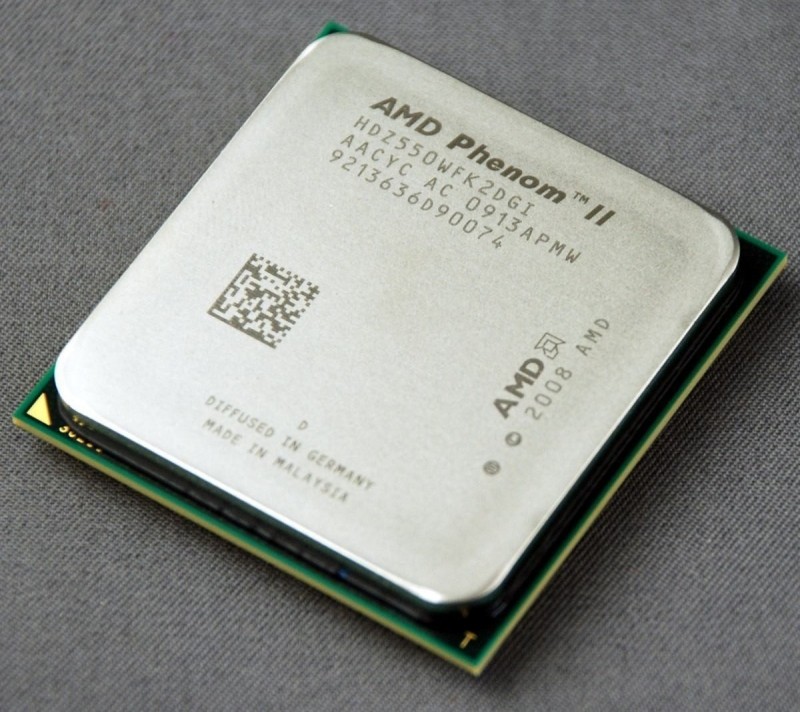
Release Date: June 1, 2009 (X2 550 BE) / April 23, 2009 (X4 955 BE)
Standard Clock
Speed: 3.1 GHz / 3.2 GHz Boost: 3.7 - 3.9 GHz (~ 22%)
The release of the new version of AMD K10.5 architecture in the first months of 2009 became a symbol of the company's strength in the niche of budget products. The arrival of the Black Edition processors also added a nice addition in the form of an unlocked multiplier to simplify overclocking.
While the clock boost was ultimately not very impressive by historical standards, it went hand in hand with the actual performance boost that lifted the processor out of the Core 2 Quad's shadow. At $ 100, the 550 Black Edition was tremendous value in the case of the ability to unlock two disabled cores (unlocking the fourth core would be the biggest win for the X3 720 BE), and the sheer performance of the $ 245 955 BE ensured that its potential could only be surpassed by a more expensive platform. X58.
Intel Core 2 Duo E6600 (Conroe)

Release Date: July 27, 2006
Standard Clock
Speed : 2.4 GHz Overclocking: 3.0 - 4.0 GHz (~ 45%)
At the time of Intel Conroe's July 2006 release, the focus was on the unlocked X6800 multiplier, but the most important the cheapest full-featured chip (4 MB L2 cache) played a role. At $ 316, the chip cost $ 200 less than the next-best performance (E6700) and delivered results that rivaled the most powerful AMD Athlon 64s.
With standard cooling and voltages, the E6600 could be expected to reach 2.7-3 GHz. When purchasing a more powerful used cooler, the stability of the motherboard was often the limiting factor, as the system bus speeds exceeded 400 MHz and approached 450 MHz. The overclocking potential was so great that the prices of the X6800 ($ 999) and Athlon 64 FX-62 ($ 799) seemed obviously ridiculous when compared to the price and performance of the E6600.
Intel Core 2 Duo E8400 E0 Revision (Wolfdale-6M)
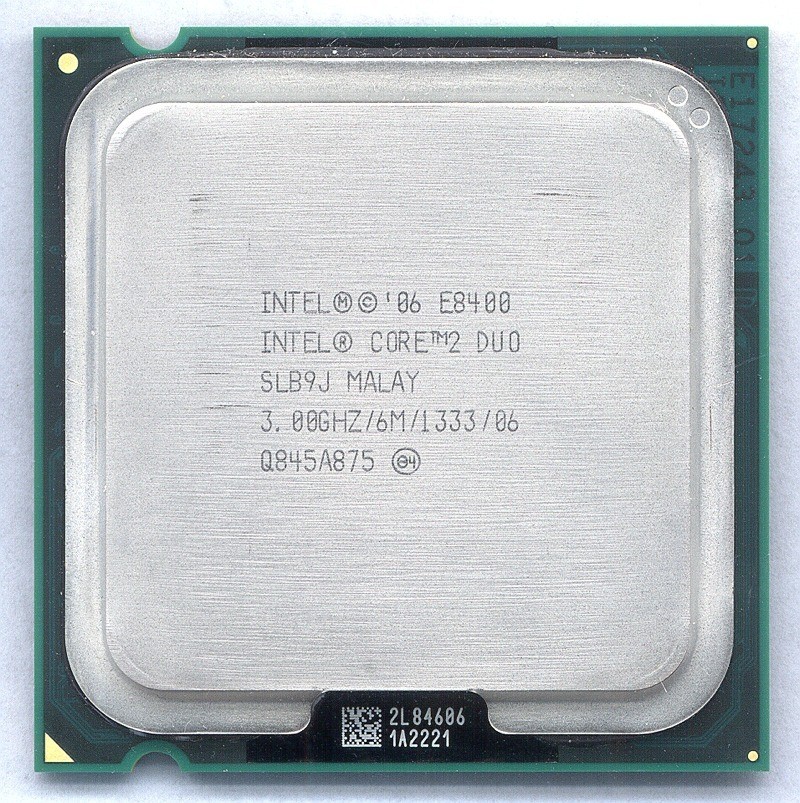
Released : January 7, 2008 (C0 version) / July 18, 2008 (E0 version)
Standard clock speed: 3.0 GHz
Overclocking: 4.0 - 4.5 GHz (~ 41%)
Immediately after January 2008 release With the C0 version of the Wolfdale E8400, it immediately established itself as an affordable processor with the ability to improve performance. Five months later, the E0 version provided much more advanced voltage requirements. Some E8400s in the C0 version were able to operate at 4 GHz, and in the new version the same frequency could be achieved with standard voltage, parameters and a cooler.
By the time E0 was released, OEM kit prices had dropped to $ 149, and various multifunction boards on the P45 and X48 were capable of supporting bus speeds in the 500 MHz (2000 MHz FSB) range. Maintaining the stability of these systems with a frequency of 4 GHz and higher is a testament to the quality of both the architecture and the chipsets.
Advertising
Our company offers for rent servers with processors from Intel and AMD. In the latter case, these are epic servers! VDS with AMD EPYC , CPU core frequency up to 3.4 GHz. The maximum configuration is 128 CPU cores, 512 GB RAM, 4000 GB NVMe.
